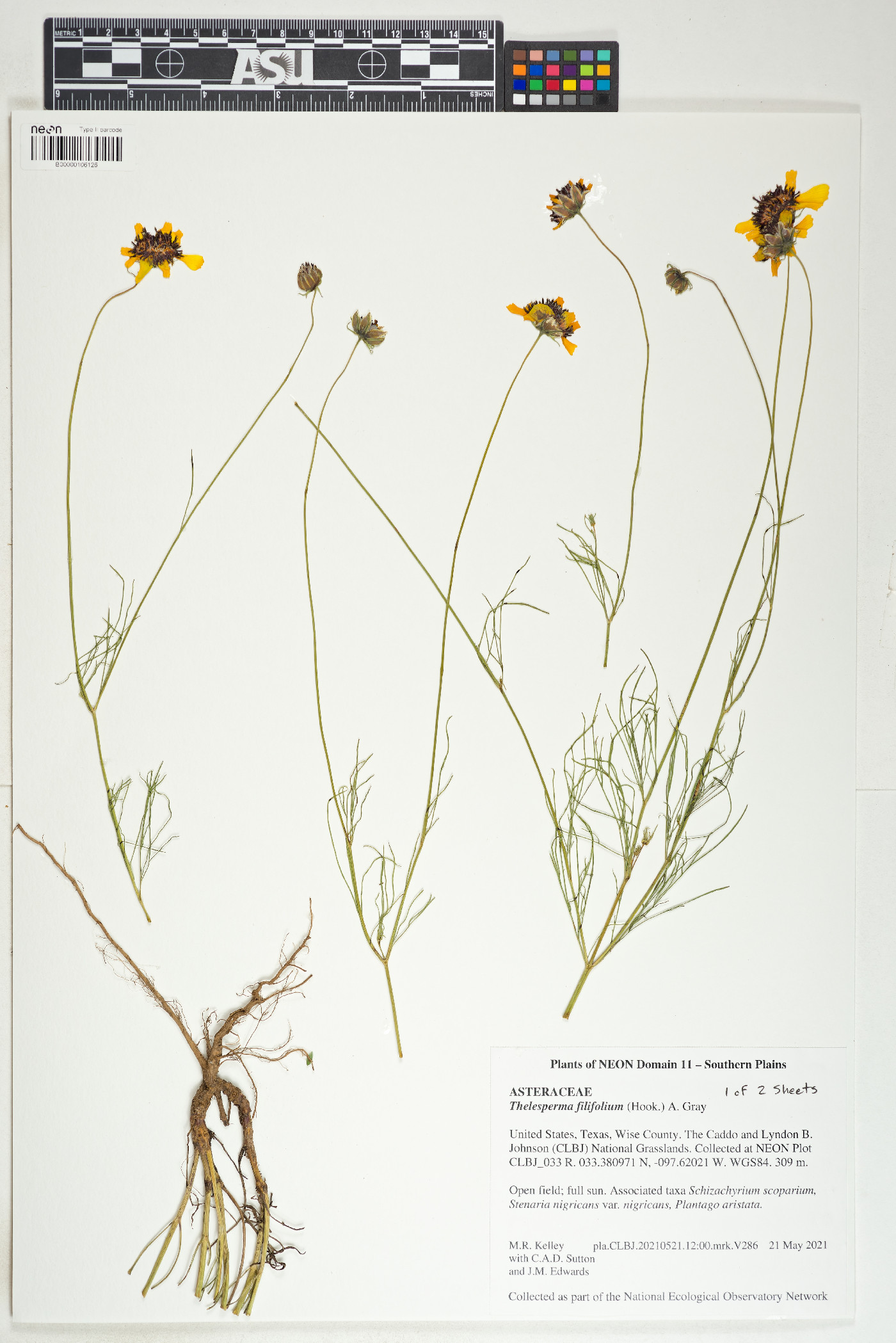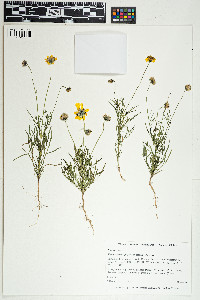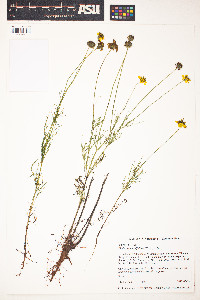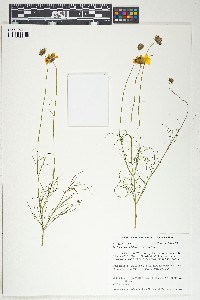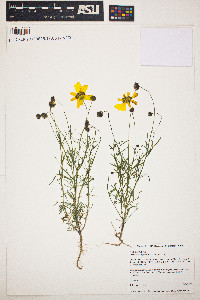Annuals (sometimes persisting), 10-40(-70+) cm.
Cauline leaves crowded to ± scattered over proximal
1/2-
3/4 of plant heights, internodes mostly 10-35(-50+) mm; lobes mostly linear to filiform, sometimes oblanceolate, 5-30(-55+) × 0.5-1(-3+) mm.
Calyculi of 7-8+ linear to narrowly triangular bractlets (2-)4-8+ mm.
Ray florets 8; laminae yellow to golden yellow (sometimes proximally suffused with red-brown), 12-20+ mm.
Disc corollas red-brown or yellow with red-brown nerves, throats shorter than lobes.
Cypselae 3.5-4+ mm;
pappi 0.5-1(-2+) mm.
2n = 16, 18. Flowering Mar-Aug(-Oct). Disturbed sites on clays or sandy soils, rocky slopes, often on limestone; 10-2200 m; Ark., Colo., Kans., La., Miss., Mo., Nebr., N.Mex., Okla., S.Dak., Tex., Wyo.; Mexico (Nuevo León). As here circumscribed,
Thelesperma filifolium includes plants that others have treated as a distinct species or variety:
T. intermedium or
T. filifolium var.
intermedium, characterized as plants mostly 10-40 cm (versus taller); internodes 'relatively short' (versus longer); calyculus bractlets mostly
1/4-
1/2 lengths of phyllaries (versus more than
1/2 as long); ray corollas yellow (versus 'golden yellow'); disc corollas yellow (versus sometimes red-brown); distribution mostly north and west of the typical form (Colorado, Kansas, Nebraska, New Mexico, w Oklahoma, South Dakota, c and w Texas, Wyoming).
According to A. Cronquist (1980), Thelesperma trifidum (Poiret) Britton has been misapplied (e.g., M. L. Fernald 1950) to T. filifolium.

